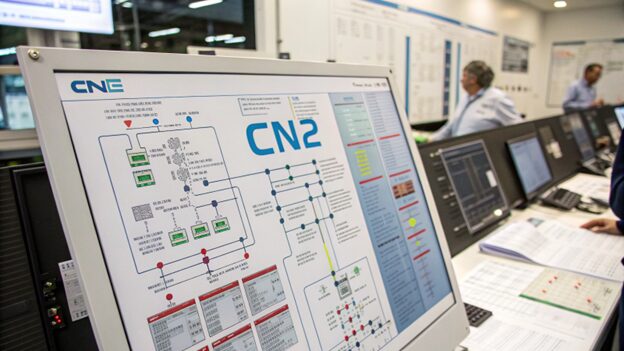How to Optimize ERP/OA with Japan CN2 Lines

In the realm of enterprise technology, maintaining seamless ERP and OA system operations is critical for global competitiveness. Slow response times, data synchronization delays, and intermittent outages can disrupt workflows, hinder collaboration, and impact bottom-line productivity. Enter Japan CN2 lines—a specialized network infrastructure designed to address these pain points with precision engineering. This article delves into the technical nuances of leveraging Japan lines, offering actionable insights for IT architects and network engineers aiming to build robust, low-latency enterprise networks.
Understanding the Architecture: Beyond Basic Connectivity
CN2, short for China Telecom Next Generation Carrier Network, represents a premium IP transit solution optimized for enterprise-grade applications. Unlike standard international connections that rely on shared internet backbones, the lines operate on dedicated routes with prioritized bandwidth allocation. Two primary variants exist:
- CN2 GT: A cost-effective option suitable for general enterprise needs, offering balanced performance across regional networks.
- CN2 GIA: The premium tier, designed for latency-sensitive applications, featuring direct peering with major ISPs and minimal route hops.
Key technical differentiators include:
| Metric | CN2 GIA | Standard International Line |
|---|---|---|
| Average Latency (Tokyo to Shanghai) | ~50ms | 150-200ms |
| Packet Loss Rate | <0.1% | 1-3% |
| Redundancy Mechanism | Multi-path BGP with automatic failover | Single-path routing |
Core Advantages for Mission-Critical Applications
Enterprise IT teams value CN2 lines for three primary technical advantages that directly impact ERP/OA performance:
- Low-Latency Data TransferSub-100ms round-trip times between Japan and major Asian data centers ensure real-time responsiveness for inventory management systems, cross-border approval workflows, and live collaboration tools. This is achieved through optimized routing tables that prioritize direct interconnection points over transit networks.
- Intelligent Traffic EngineeringDynamic BGP routing combined with QoS mechanisms detect and bypass congested nodes in real-time. Machine learning algorithms analyze traffic patterns to adjust bandwidth allocation, ensuring ERP data packets receive priority over non-critical traffic like email or web browsing.
- High Availability ArchitectureRedundant network paths and automatic failover protocols guarantee 99.99% uptime. Geo-distributed edge nodes in Tokyo and Osaka provide localized entry points, reducing dependency on a single physical location and minimizing the impact of regional outages.
5 Critical Factors in Selecting a Provider
Not all offerings are created equal. Technical due diligence is essential to ensure alignment with your organization’s performance requirements:
- Network Infrastructure CredentialsVerify ASN (Autonomous System Number) partnerships with tier-1 Japanese carriers like NTT and SoftBank. Look for providers with direct access to Japan’s domestic IX (Internet Exchange) points, which facilitate low-latency peering with local services.
- Performance Testing ProtocolsInsist on real-world load testing using tools like Wireshark for traffic analysis and Apache JMeter for simulating ERP transaction volumes. Key metrics to validate include:
- Peak concurrent user handling capacity
- Database query latency under load
- File transfer speeds for large OA attachments
- Scalability ArchitectureEnsure the provider offers elastic bandwidth scaling to accommodate 20-30% annual growth projections. Look for solutions that support seamless upgrades from 100Mbps to 10Gbps without requiring hardware replacements or network reconfiguration.
- Security and Compliance FeaturesConfirm adherence to international data protection standards like GDPR and Japan’s Act on the Protection of Personal Information. Essential security features include:
- Hardware-based SSL acceleration for encrypted data transmission
- Distributed denial-of-service (DDoS) mitigation at the network edge
- Real-time intrusion detection systems (IDS) with threat intelligence feeds
- Technical Support Competency
Evaluate response times for critical issues—ideally sub-15 minutes for severe outages. Look for providers offering 24/7 access to tier-3 network engineers with expertise in BGP routing, OSPF configuration, and ERP-specific traffic optimization.
During the evaluation phase, request a detailed route analysis using tools like MTR (My Traceroute) to visualize hop counts and latency distribution across the proposed network path.
Real-World Performance Case Studies
Let’s examine one anonymized case study that illustrate the tangible benefits:
Case Study: Multinational Manufacturing Conglomerate
The company faced frequent delays in cross-border production planning due to ERP synchronization lags between Tokyo and Shanghai facilities. Key challenges included:
- Average approval workflow latency of 12 seconds
- Weekly system freezes during peak production data updates
Solution: Deployment of a CN2 GIA connection with dedicated bandwidth for ERP traffic, combined with application-level caching for frequently accessed master data.
Results:
- Latency reduced to 1.8ms for critical database transactions
- System availability improved to 99.992% over a 12-month period
- Production planning cycle time shortened by 35%, enabling faster response to market demands
Common Pitfalls and Mitigation Strategies
Even well-planned deployments can encounter challenges. Here’s how to avoid typical issues:
- Overprovisioning vs. Underprovisioning BandwidthUse historical traffic data and growth models to calculate optimal bandwidth. A common formula: (Current peak throughput * 1.3) + projected annual growth increment. Avoid “one-size-fits-all” packages that may not account for seasonal traffic variations.
- Ignoring Protocol-Specific OptimizationERP systems like SAP often use proprietary protocols that require specific network configurations. Work with your provider to enable features like TCP window scaling and selective acknowledgment (SACK) to optimize data transfer for these applications.
- Neglecting Security in Favor of PerformanceWhile low latency is critical, never compromise on encryption and access controls. Ensure all connections use AES-256 encryption for data in transit and implement granular VPN access for remote employees.
- Assuming “Set It and Forget It” MaintenanceNetwork conditions change constantly. Schedule regular BGP route audits using tools like RouteViews to detect suboptimal paths and update QoS policies quarterly to reflect changing application priorities.
Japan CN2 lines represent a strategic investment in enterprise network infrastructure, offering tangible improvements in ERP/OA performance for global organizations. By focusing on technical due diligence, structured deployment, and proactive maintenance, IT teams can build networks that not only meet current needs but also scale seamlessly with future digital transformation initiatives.
